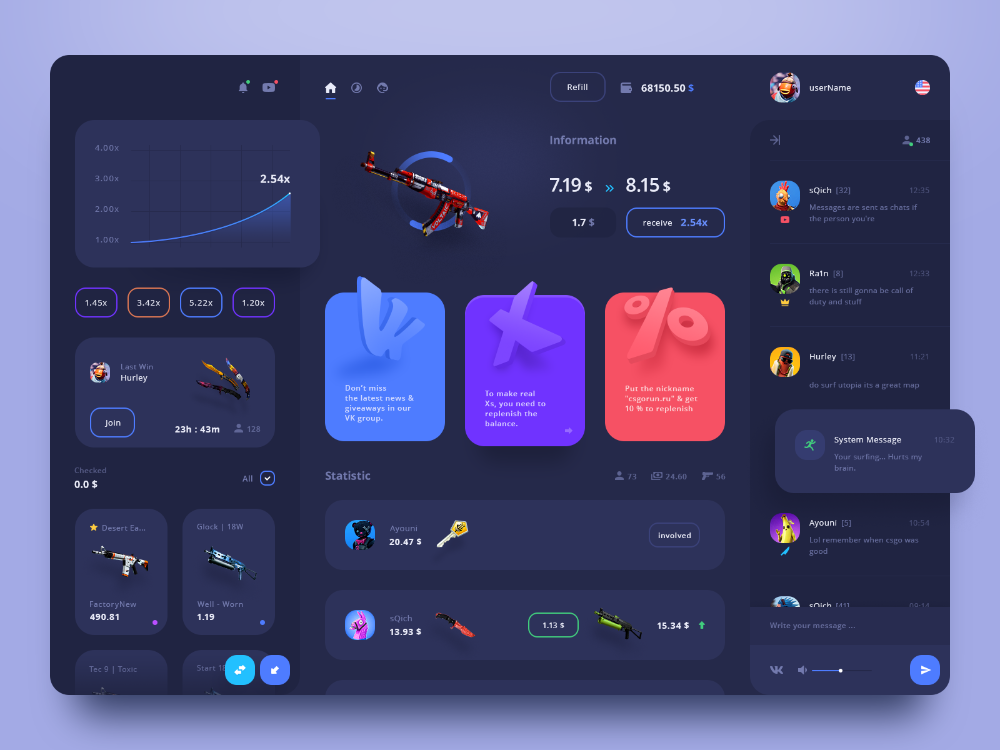In today’s digital age, the success of a product often hinges on its user interface (UI) and user experience (UX) design. Good UI/UX design not only makes a product visually appealing but also ensures that it is functional, intuitive, and enjoyable to use. But what exactly constitutes good UI/UX design? Let’s explore the key elements that contribute to outstanding UI/UX design.
1. User-Centric Approach
Understanding the Users
A fundamental aspect of good UI/UX design is a deep understanding of the users. This involves identifying the target audience, their needs, preferences, and behaviors. User research methods such as surveys, interviews, and usability testing are essential to gather insights that inform the design process.
Empathy and User Personas
Designers need to empathize with users, putting themselves in their shoes to understand their pain points and motivations. Creating user personas—detailed profiles representing different user types—helps in designing solutions tailored to specific user groups.
2. Simplicity and Clarity
Minimalist Design
Simplicity is key in UI/UX design. A minimalist approach, focusing on essential elements, helps in reducing clutter and enhancing usability. Each design element should serve a purpose and contribute to the overall functionality of the product.
Clear Visual Hierarchy
A clear visual hierarchy guides users through the interface, highlighting the most important elements and actions. This can be achieved through the strategic use of typography, color, contrast, and spacing to direct the user’s attention.
3. Consistency
Uniform Design Language
Consistency in design creates a cohesive and predictable user experience. This involves using a uniform design language across all elements, such as buttons, icons, and fonts. Consistent design patterns and interactions help users navigate the product more easily.
Brand Consistency
Maintaining brand consistency in UI/UX design ensures that the product aligns with the overall brand identity. This includes adhering to brand colors, fonts, and tone of voice, creating a seamless and recognizable brand experience.
4. Accessibility
Inclusive Design
Good UI/UX design is inclusive, ensuring that all users, regardless of their abilities, can access and use the product. This involves considering accessibility standards and guidelines, such as the Web Content Accessibility Guidelines (WCAG).
Adaptable and Responsive Design
Designs should be adaptable and responsive, providing a seamless experience across different devices and screen sizes. This ensures that users can interact with the product effectively, whether on a desktop, tablet, or smartphone.
5. Intuitive Navigation
Easy-to-Use Interface
An intuitive interface is easy to use and understand. This involves designing navigation structures that are logical and straightforward, allowing users to find what they need without confusion. Clear labels, familiar icons, and straightforward menus contribute to intuitive navigation.
Effective Use of Feedback
Providing feedback to users through visual cues, animations, and notifications helps them understand the results of their actions. This feedback ensures that users feel in control and informed throughout their interaction with the product.
6. Aesthetics and Visual Appeal
Attractive Design
While functionality is paramount, the aesthetic appeal of a product should not be overlooked. An attractive design enhances the user experience by making the product enjoyable to use. This involves using a harmonious color scheme, appealing typography, and engaging visuals.
Emotional Connection
Design can evoke emotions, creating a connection between the user and the product. Thoughtful use of imagery, color, and interactive elements can enhance the user’s emotional experience, leading to increased satisfaction and loyalty.
7. Performance and Efficiency
Fast and Responsive
A good UI/UX design ensures that the product performs efficiently, with fast loading times and smooth interactions. Users expect quick responses, and any delay can lead to frustration and abandonment.
Optimized Workflows
Efficiency in workflows and processes is crucial. Designers should aim to minimize the number of steps required to complete tasks, making interactions as seamless and straightforward as possible.
Conclusion
Good UI/UX design is a blend of art and science, combining aesthetic appeal with functional excellence. By focusing on a user-centric approach, simplicity, consistency, accessibility, intuitive navigation, visual appeal, and performance, designers can create products that not only meet but exceed user expectations. Ultimately, good UI/UX design leads to enhanced user satisfaction, increased engagement, and a successful product.





